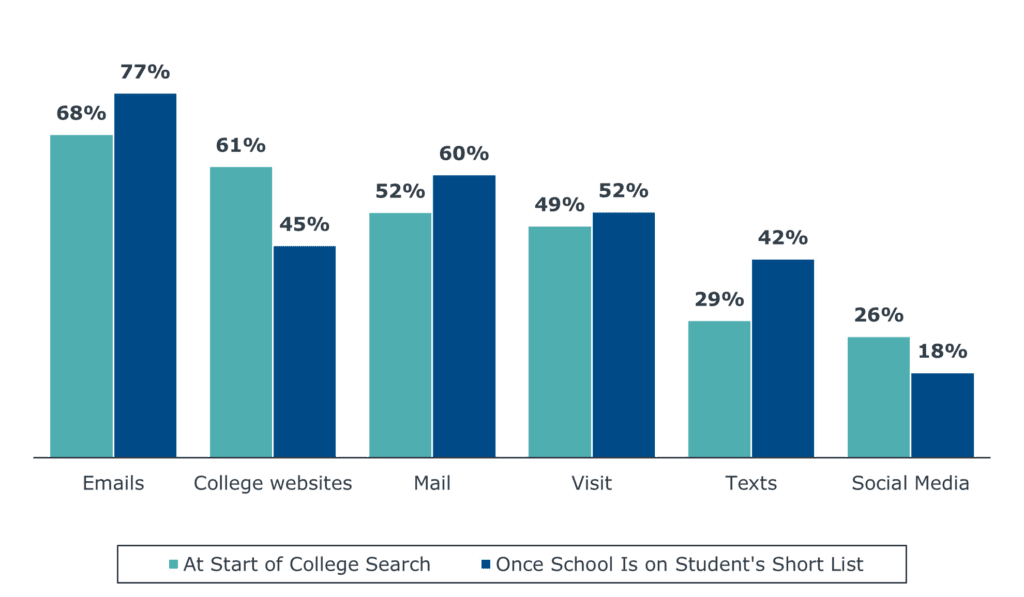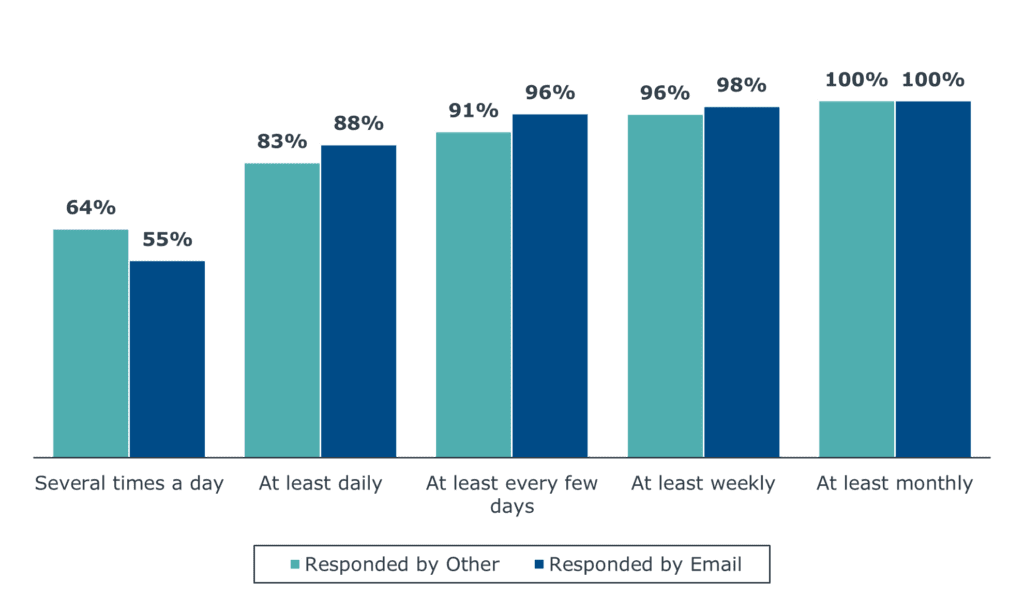Is email marketing to prospective students dead? Not so fast.
For at least a decade, marketing strategists have been predicting the demise of email as a viable communication channel. In and beyond higher education, the crowded inbox has led many marketers to prioritize virtually every other channel, including search engine optimization, paid search, digital display advertising, and social media promotion, because email campaigns seem old-school or low-impact.
At EAB, we’ve long been the dissenting voice. Our campaign analytics, along with surveys, focus groups, and interviews, consistently point to email as the single most effective and preferred way to reach prospective college students.
Email: Harder to Manage and Measure
That said, email marketing has faced mounting challenges in recent years, particularly within the higher education sector. Student engagement is increasingly difficult to track, with Apple and other smartphone manufacturers limiting visibility into opens and clicks. Gmail and other email providers have tightened deliverability standards, making it harder for emails—especially those from colleges and universities—to reach prospective student inboxes at all.
The future presents even more headwinds: with the advent of technologies like Apple Intelligence, AI-generated summaries and AI-rewritten subject lines could further obscure the messages colleges intend to deliver.
So, with all these issues, should college enrollment marketers still rely on email as a mainstay of their most important campaigns?
That’s one of the key decisions we set out to inform with this year’s Student Communication Preferences Survey, EAB’s longstanding research initiative on how students conduct their college search. Our survey, which reached about 20,000 prospective students in 2025, includes a consistent set of questions year over year, allowing us to identify long-term changes in the information landscape and student behavior, while also featuring focused questions on topics of particular concern.
Email Remains Students’ Top Channel
This year, our marketing strategy team focused closely on students’ engagement with email. Was this the year email finally dropped off the predicted cliff?
As it turns out, once again, the reports of email’s demise are greatly exaggerated. Students continue to view email as a vital channel. In fact, they ranked it as their single most preferred way to receive information from colleges, and their interaction rates were higher than many marketers might assume.
At the start of the college search:
- 68% of students prefer to receive information via email
- 52% prefer paper mail
- 51% prefer college websites
Later in the search process:
- 77% still prefer email
- 60% favor paper mail
- 52% look to college visits
Students’ Preferred Communication Channels with Colleges
Participants Could Select Multiple Options, EAB 2025 Student Communication Preferences Survey

These results have been relatively stable over time. When we last ran the Student Communications Preferences survey, in 2023, a modestly larger proportion of students expressed preference for email at the beginning of their college search (75% in 2023 vs. 68% in 2025), but later in the college search process, the preference for email was comparable in 2023 as it was this year (76% vs. 77%).
Students Still Check Email Often
We also asked how frequently students check their email, and we were struck by how much engagement the inbox gets:
- 55% check more than once a day
- 32% check once a day
- 9% check every few days
That’s hardly the profile of a dying channel.
These results held even when broken out by how students accessed the survey. While most responded via email invitations, others came through social media recruitment or in-person outreach. Even among those students who didn’t respond by email, 83% reported checking their inbox at least once a day, compared to 88% for the email-based survey respondents.
How Often Do Students Check Email?
By Method of Student Response to EAB’s 2025 Student Communication Preferences Survey

Notably, this frequent interaction that students have with their email inboxes takes place even though a majority of students who responded to the survey said they are not allowed to use their smartphones during the school day:
- 8% of students say their phones are not allowed at school
- 9% of students have their phones locked up at school
- 48% get to keep their phones but can’t use them during school hours
The Responsive Opportunity
For marketers and enrollment leaders, this year’s Student Communication Preferences survey results reinforce the continued importance of email campaigns—at least those that are executed well. If students are checking email as frequently as the survey suggests, colleges that act quickly to respond to signals of intent, and communicate consistently and persistently in the email channel, will gain an edge over those that are slower or more sporadic.
These findings don’t negate the real challenges of email marketing in higher education. Deliverability hurdles, limited visibility into engagement, and AI-generated interference demand vigilance, creativity, and adaptability.
But the core value of email in reaching your future students remains. In 2025, prospective students still want your email—at least, if it’s timely, personalized, and authentic.

More Blogs

AI visibility is critical when competing for student enrollments

The higher ed SEO checklist
